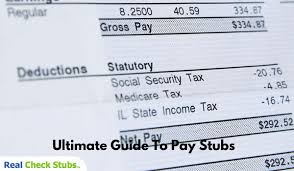401k Retirement Contributions on Pay Stubs : Essential 2025 Guide
Introduction to 401(k) Retirement Contributions on Pay Stubs
401(k) Retirement Contributions on Pay Stubs are one of the first lines smart employees review every payday. These entries reveal how much you’re investing toward retirement, how your employer contributes, and how those amounts affect your take-home pay. Understanding this section helps ensure payroll accuracy, keeps you within annual contribution limits, and empowers you to make tax-efficient financial decisions for your future.
In this 2025 guide, you’ll learn where 401(k) items appear on your pay stub, how Traditional and Roth contributions differ, this year’s contribution limits, and how employer matches are displayed. For those generating professional stubs, a quick pay stub generator can mirror real payroll formats for both employee and employer records. For more background, explore our internal resource on retirement benefit basics.
Where 401(k) Items Appear on a Pay Stub
Most pay stubs group retirement contributions among deductions or benefits, showing both current and year-to-date (YTD) totals. Look for labels like “401(k),” “Retirement Plan,” “401K-Roth,” “401K-Pre-Tax,” or your plan provider’s name.
- Employee 401(k) deduction (current/YTD): Your contribution for this pay period and cumulative total for the year.
- Employer match (current/YTD): The company’s contribution — a benefit added on top of your wages.
- Traditional vs. Roth indicator: Stubs often separate these as “401K-Pre” (pretax) and “401K-Roth” (after-tax).
- Taxable wages after pretax deductions: Displays how Traditional 401(k) contributions lower taxable income.
Traditional vs. Roth 401(k): What Your Stub Shows
Traditional 401(k) (Pretax)
Contributions reduce your current taxable wages, lowering income taxes today. Growth is tax-deferred, and withdrawals in retirement are taxed as ordinary income. On your pay stub, “taxable wages” will appear lower than your gross pay when a Traditional 401(k) contribution is present.
Roth 401(k) (After-Tax)
Contributions do not reduce your current taxable wages — you pay taxes upfront. Qualified withdrawals in retirement, however, are tax-free. Roth 401(k) lines appear as after-tax deductions and do not reduce the “taxable wages” column.
Some plans let you split contributions between both types. Each line will have its own current and YTD totals, clearly labeled on the stub.
401(k) Contribution Limits for 2025
Keeping track of limits ensures you stay compliant and maximize tax benefits. For 2025:
- Employee contribution limit: $23,000 (Traditional + Roth combined)
- Catch-up contribution (age 50+): Additional $7,500
- Total limit including employer match: $69,000 (or $76,500 with catch-up)
Use your YTD 401(k) totals to track contributions. If you increase your rate mid-year, check your progress to avoid exceeding the annual cap. You can also calculate contributions easily using online tools like a 401(k) calculator.
Employer Match: How It’s Displayed on Pay Stubs
Employer matching contributions are free money for your retirement. Common formulas include a 50% match on the first 6% you contribute, or a dollar-for-dollar match up to a certain percentage. On your stub, the match appears under “Company 401(k)” or “Employer Match,” with both current and YTD totals.
Example: You earn $4,000 monthly and contribute 5% ($200). Your employer matches 3% ($120). Your stub shows:
- 401(k) Employee Contribution (Current): $200 | YTD adds each month
- 401(k) Employer Match (Current): $120 | YTD adds each month
- Taxable Wages (Current): $3,800 if Traditional; $4,000 if Roth
Taxes: What Changes on Your Pay Stub
- Traditional 401(k): Lowers taxable wages, reducing federal and state income tax withholding.
- Roth 401(k): Does not lower taxable wages; taxes are paid upfront.
- FICA (Social Security & Medicare): Not reduced by 401(k) contributions, as FICA is based on gross pay.
Learn more about paycheck taxes in our internal resource on payroll tax breakdowns.
Common Pay Stub Issues and Fixes
- Wrong deduction percentage: Check your payroll election and notify HR if it’s incorrect.
- Missing employer match: Verify your eligibility and vesting schedule.
- Mislabeled type (Traditional/Roth): Report immediately to avoid tax reporting errors.
- Incorrect YTD totals: Compare against prior stubs or request a payroll audit.
Self-Employed or Managing Payroll?
If you’re self-employed or run payroll for a small team, you can still display 401(k) Retirement Contributions on Pay Stubs accurately. Use tools like a professional pay stub generator to include both employee and employer 401(k) lines automatically, with current and YTD tracking.
Conclusion: Stay Confident About Your 401(k) Pay Stub
Understanding 401(k) Retirement Contributions on Pay Stubs is key to maximizing your savings and preventing errors. By regularly checking your pay stub, you’ll confirm your contributions are correct, your employer matches are applied, and your taxable wages align with your plan type. Whether you prefer Traditional or Roth, the right tracking habits ensure your retirement goals stay on course.
Use reliable tools like a pay stub generator to visualize your contributions, and explore our internal guide on financial planning for employees to make your 401(k) strategy stronger in 2025 and beyond.

